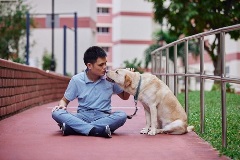Government officials will NEVER ask you to transfer money or disclose bank log-in details over a phone call. Call the 24/7 ScamShield helpline at 1799 if you are unsure if it is a scam.
3 Nuggets About Guide Dog Teams For Commuters Who Want To Help
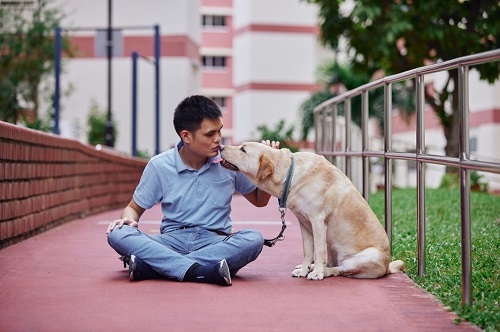
Have you seen Hong Sen and the “goodest girl”, Clare riding public transport together? They are one of the guide dog teams paired by Guide Dog Singapore (GDS) to help blind and vision-impaired people navigate through daily life.
Awareness about guide dogs has improved since Hong Sen and Clare took their first public transport ride together in 2017. “Now I don’t hear people ask ‘why is your dog at the station?’. Instead, I hear ‘see there’s a guide dog there’,” Hong Sen shared.
Hong Sen sat down with the Caring SG Commuters team recently to share his experience as a guide dog team handler, and some interesting nuggets about guide dog teams:
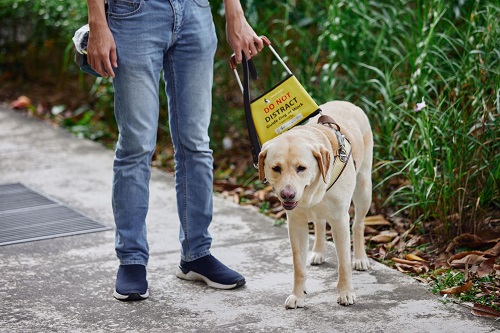
#1 Not all dogs can be guide dogs
“A guide dog is not on public transport because a blind person accompanies them. They are there precisely because they are specially trained, specially selected and bred from special blood lines to help the blind and vision-impaired,” Hong Sen shared.
For example, Clare can manoeuvre extremely well through crowds and has an incredible memory. Although they only visit the vet once or twice a year, she can remember the route well.
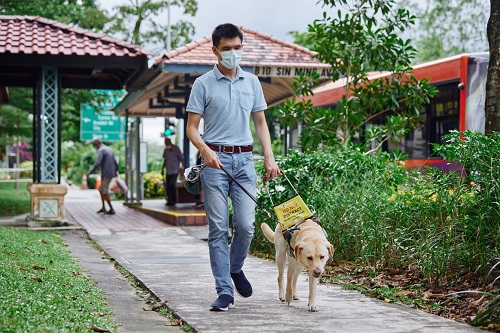
#2 The guide dog team is a collaborative relationship
However, while a guide dog is intelligent, it does not mean that “the dog taking is the uncle out”, Hong Sen added. The dog will understand words like “escalator” and “lift”, and can lead the handler to these locations, but still relies on the handler to provide instructions along the way. Hong Sen stressed that it is ultimately a partnership!
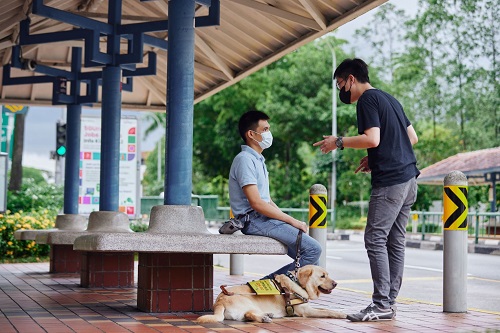
#3 How commuters like you can help!
There are limitations as to what a guide dog can help its handler with, for instance, figuring out the number on an approaching bus, or where the platform for a different MRT line is. In these instances, guide dog users appreciate the help of fellow commuters like you!
And when you do, do try to listen to what the blind and vision-impaired person needs. A vision-impaired person usually follows their own mental map to get to their destination, so it is most helpful if you tailor your assistance to this mental map, instead of suggesting an alternative route.
Hong Sen also added that he hoped that more commuters would go beyond knowing guide dogs exist, to also find out how and why these dogs are valuable to vision-impaired persons. Ultimately, better understanding will support a caring commuting culture for the blind, vision-impaired and their guide dog teams.
